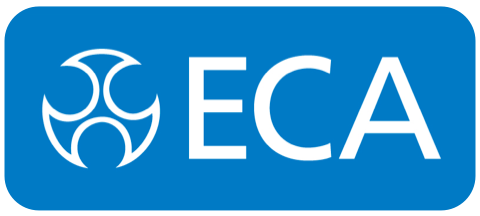- Home
- News
Navigating International Trade Certifications for Optimal Electrical Testing Safety
 In today’s interconnected global market, navigating the complexities of international trade certifications is crucial for ensuring optimal Electrical Testing Safety. As companies strive to meet various regulatory requirements across borders, understanding the nuances of different certifications can be overwhelming. This ultimate guide aims to demystify the certification landscape, offering insights into the standards and practices that uphold electrical testing safety. With an emphasis on compliance, risk mitigation, and quality assurance, we will explore the essential certifications that every electrical testing entity should be familiar with. By the end of this guide, readers will be equipped with the knowledge needed to successfully navigate certification processes, ultimately enhancing their commitment to safety and reliability in electrical testing.
In today’s interconnected global market, navigating the complexities of international trade certifications is crucial for ensuring optimal Electrical Testing Safety. As companies strive to meet various regulatory requirements across borders, understanding the nuances of different certifications can be overwhelming. This ultimate guide aims to demystify the certification landscape, offering insights into the standards and practices that uphold electrical testing safety. With an emphasis on compliance, risk mitigation, and quality assurance, we will explore the essential certifications that every electrical testing entity should be familiar with. By the end of this guide, readers will be equipped with the knowledge needed to successfully navigate certification processes, ultimately enhancing their commitment to safety and reliability in electrical testing.
Understanding the Importance of International Trade Certifications in Electrical Testing
In today's global market, international trade certifications play a pivotal role in ensuring the safety and reliability of electrical testing processes. These certifications are not just formalities; they represent a commitment to adhering to high safety standards that protect consumers and industries alike. By understanding the significance of these certifications, stakeholders can navigate the complexities of compliance and mitigate risks associated with electrical failures.
The importance of international trade certifications lies in their ability to provide a universally accepted benchmark for safety and quality. When products are certified, they undergo rigorous testing and evaluation, which helps to build trust between manufacturers and consumers across borders. This trust is crucial, especially in regions where electrical standards vary widely. Additionally, certifications can facilitate smoother entry into international markets, as they often are prerequisites for regulatory approvals, thereby streamlining trade processes and enhancing competitive advantage for businesses involved in electrical testing and manufacturing.
Key Certifications: IEC, UL, and CE Standards for Electrical Safety Compliance
When it comes to ensuring electrical safety compliance in international trade, understanding key certifications such as IEC, UL, and CE standards is crucial. The International Electrotechnical Commission (IEC) sets international benchmarks for electrical products, promoting safety and performance across different markets. Meanwhile, Underwriters Laboratories (UL) focuses on testing and certifying electrical devices for safety, widely recognized in North America. The CE marking, a mandatory conformity mark in the European Economic Area, signifies that a product meets essential health and safety requirements.
Tips for manufacturers include thoroughly researching the specific requirements of each certification to ensure compliance across different markets. Additionally, consider collaborating with accredited testing laboratories that are well-versed in these standards. This partnership can expedite the certification process and prevent costly delays due to non-compliance issues.
Finally, keep abreast of changes in certification standards and regional regulations, as these can impact your products' marketability. Regular updates and training for your team can enhance compliance and foster a culture of safety, ultimately leading to better consumer trust and product reliability.
Navigating the Complexities of Certification Processes for Global Market Accessibility
Navigating the complexities of certification processes can be a daunting task for companies aiming to enter the global market, especially in the field of electrical testing safety. Understanding the various international standards, such as IEC and UL certifications, is crucial for ensuring product safety and compliance. These certifications not only build trust with consumers but also facilitate smoother entry into different markets.
**Tip:** Begin by conducting thorough research on the specific certifications required for your target markets. Each region may have unique requirements, so staying informed will help avoid potential delays in getting your products to market.
Additionally, collaborating with certification bodies early in the development process can significantly ease the path to certification. This proactive approach allows for the identification and rectification of compliance issues before they become major obstacles.
**Tip:** Consider establishing a strong relationship with a local certification expert who understands the nuances of the market. Their insights can be invaluable in navigating the intricate certification landscape, ultimately enhancing your product's accessibility in international markets.
Navigating International Trade Certifications for Optimal Electrical Testing Safety
| Certification Type | Region | Requirement Overview | Compliance Timeframe | Cost Range (USD) |
|---|---|---|---|---|
| CE Marking | European Union | Products must meet EU safety, health and environmental requirements. | 2-6 months | $5,000 - $15,000 |
| UL Certification | United States | Products must be tested for safety according to US standards. | 1-3 months | $2,000 - $10,000 |
| CSA Certification | Canada | Products must meet Canadian safety and performance standards. | 2-4 months | $3,000 - $8,000 |
| FCC Certification | United States | Electromagnetic compatibility compliance for electronic devices. | 1-3 months | $1,500 - $5,000 |
| SAA Approval | Australia | Products need to comply with Australian safety standards. | 2-5 months | $2,000 - $10,000 |
Assessing the Impact of Non-Compliance: Risks and Financial Implications in Electrical Testing
The importance of compliance in electrical testing cannot be overstated, as the ramifications of non-compliance can be severe. According to a report by the National Fire Protection Association (NFPA), electrical failures contribute to over 30% of all structure fires in the United States. This alarming statistic underscores the critical need for rigorous adherence to international trade certifications and safety standards. Failure to comply not only endangers lives but can also result in significant financial losses, with companies facing fines that can reach hundreds of thousands of dollars, along with potential lawsuits and damaged reputations.
To mitigate these risks, businesses must focus on understanding and implementing relevant certifications, such as IEC standards or UL listings. One invaluable tip is to conduct regular compliance audits and ensure that all employees are adequately trained on safety protocols and standards. Additionally, utilizing third-party testing services can provide an objective assessment of compliance and identify potential risks before they escalate into costly issues.

Moreover, businesses should stay informed about evolving regulations and advancements in electrical testing technologies. Regular training sessions, participation in industry conferences, and subscriptions to relevant industry publications can enhance knowledge and preparedness. Staying ahead in the realm of compliance not only safeguards against financial repercussions but also fosters reliability and trust with clients and stakeholders.
Emerging Trends in Electrical Safety Standards: Adapting to Regulatory Changes for Compliance
The landscape of electrical safety standards is continuously evolving, driven by technological advancements and regulatory demands. In 2022, the International Electrotechnical Commission (IEC) reported a significant increase in compliance requirements across various jurisdictions, revealing that over 60% of electrical equipment manufacturers faced challenges in adhering to new safety protocols. These changes not only impact product design but also necessitate a strategic approach to testing and certification processes, emphasizing the importance of staying informed about emerging trends in electrical safety standards.
Regulatory bodies are increasingly focused on harmonizing safety standards globally, which has profound implications for manufacturers and importers. A recent survey by the National Electrical Manufacturers Association (NEMA) indicated that nearly 75% of companies plan to increase their investment in compliance strategies in the next year. As regulations adapt to innovations like the Internet of Things (IoT) and renewable energy technologies, businesses must proactively align their electrical testing practices with these evolving standards to ensure compliance and safeguard consumer safety. Embracing these trends not only mitigates risk but also fosters trust in product reliability in an increasingly competitive marketplace.

